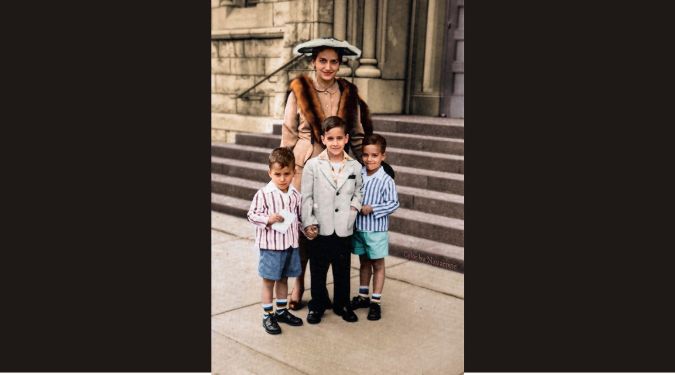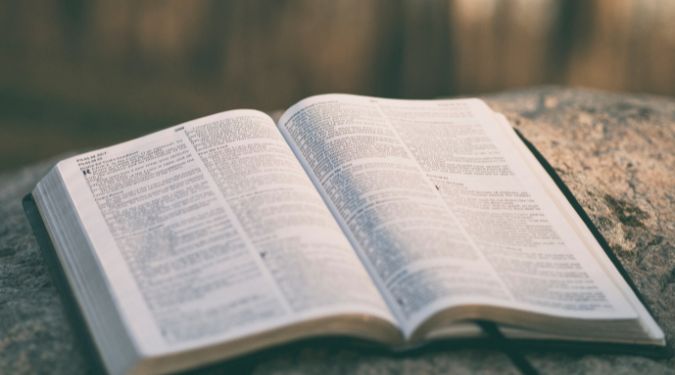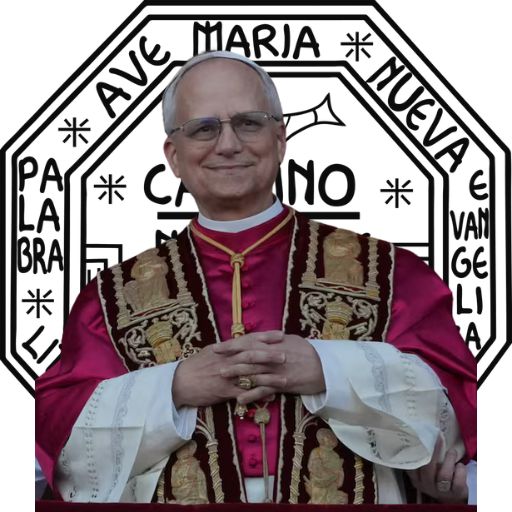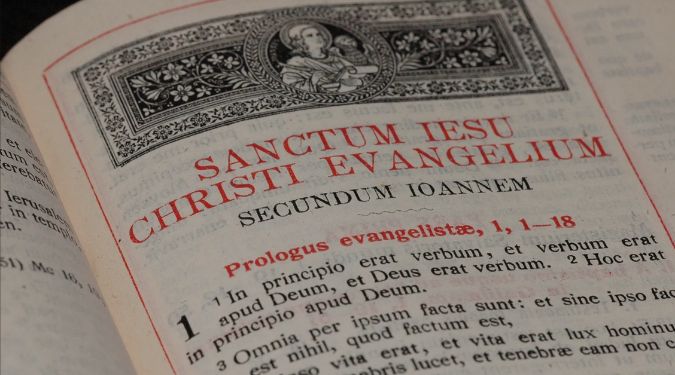Sinners, saints and God’s grace
I had been praying for a good pope and hoping for an African pope, to be honest, but God surprised us with an American pope with some African ancestry. That he has Creole roots intrigues me.
After Pope Leo’s election to the Chair of Peter, countless amateur genealogists, and some professional ones too, went straight to work to learn more about our new pope’s roots, and I thought that my readers might appreciate a summary. Following the summary is a photo gallery.
Before we begin, I must point out that when genealogists first started to trace Pope Leo’s lineage, they soon ran into a “brick wall”. They saw many public records associated with his paternal grandfather after 1950, but virtually none before that time. They soon discovered that this man had assumed a new identity and name early in the 20th century. We’ll discuss this wild story shortly.
Paternal Great Grandparents
On the Pope’s father’s side, Santo (Santi) Riggitano (1824-1898) and his wife, Maria Alioto (1834-1908) were both born and died in Milazzo in Sicily (Italy). Together they had ten children, three of whom made their way to Illinois. Santi was a civil servant for the town council.
Ernest Auguste Fontaine (1857-1919) was born in Saint-Pierre-sur-Dives, Normandie, France and died in Le Havre, Seine-Maritime, Normandie, France. His wife, Jeanne Eugénie Prevost, was born in Paris and died in Lillebonne, France. Pope Leo’s paternal grandfather, who we’ll see below, took his assumed surname, Prevost, from her family.
Maternal Great Grandparents
Jacques Martinez (1823-1891) and Marie “Mary” Rosa Panteleon Ramos were both born and died in Orleans Parish, Louisiana (New Orleans). Marie and Jacques were listed as “white” on the 1860 federal census, and “mulatto” on the federal 1850 census. Marie was listed as “black” on the 1900 federal census. “Mulatto” is a derogatory term for somebody with mixed African and European ancestry, and while the term is no longer used, it was used on federal censuses in the past.
Jacques was originally a sailor and then eventually became a cigar maker. His surname, “Martinez”, was a variation of that of his Italian father, Jacques Martino. This means that the Pope’s Spanish roots lie in the ancestors of his maternal great grandmother, Marie Ramos. While her grandfather, Vicente Ygnacio Santiago Ramos, was born in New Orleans, he was known to travel to Cuba.
Ferdinand David Baquie (1837-1883) and Eugènie Grambois (1840-1907) were both born and died in Orleans Parish, Louisiana (New Orleans). Both were listed as “mulatto” on the 1870 federal census, where Ferdinand was listed as a shoemaker.
Plaçage
In 19th-century New Orleans, plaçage (pronounced pluh-SAHZH in English) was a system of extralegal relationships between white men and free women of color, often of mixed heritage. These relationships, while not legally recognized marriages, often involved the white man providing financial support, housing, and education for the woman and any children they had together. The children of such unions, such as many of Pope Leo’s ancestors, often obtained a high degree of economic and social mobility.
Slavery
Pope Leo’s four great great grandfathers on his mother’s side all had enslaved persons living in their households. That is, they owned slaves. From the 1840 Federal census we see that Jacques Martino, the father of Jacques Martinez, had two enslaved persons in his household. George Pantaleon Agenor Ramos, the father of Marie, had three. Joseph Aristide Fleury Baquie, the father of Ferdinand, had two, and Eugène Grambois, the father of Eugènie, had five enslaved persons in his household. At this time in New Orleans, Creoles of mixed racial heritage often owned slaves.
Paternal Grandparents
Pope Leo’s grandfather, Salvatore Giovanni Riggitano (1876-1960), was born in Sicily, Italy and emigrated to the United States in 1904. He gained some notoriety as a teacher of romance languages in the upper midwest, and eventually started a language school in Chicago called “the Riggitano School”. Pope Leo’s paternal grandmother, Suzanne Louise Marie Fontaine (~1892-1979), was born in France and died in Detroit.
Pope Leo’s uncle John was conceived while their father was legally married to another woman, Daisy Hughes. John was born in Lackawanna, New York, in the maternity hospital associated with Our Lady of Victory Infant Home, a home for unwed mothers and their infants. The pair was caught at the home of Salvatore’s sister, Rosa, in Quincy Illinois. She was pregnant at the time with her first son.
Sometime after the birth of John, Salvatore Riggitano changed his name to “John Riggitano Prevost”, “Prevost” being the maiden name of the mother of Suzanne Fontaine.
Suzanne, for her part, assumed the surname “Fabre”, a choice that might have been inspired by the name of a famous Italian silent screen actress of that time. That surname appears on her son’s birth certificates and on her social security application for her first son. She knew and taught both Italian and French, and from her obituary we know that she eventually became a Third Order Carmelite.
I will not go any further with this story, but it is told in more detail here.
Maternal Grandparents
Pope Leo’s maternal grandfather, Joseph Norval Martinez (1864-1926) was born in Port-au-Prince, Haiti and died in Chicago. His wife, Louise Baquie (1868-1945), was born in New Orleans and died in Chicago. They must have moved to Chicago from New Orleans sometime between 1910 and 1912, because the 1910 federal census shows them living in New Orleans, but Pope Leo’s mother, Mildrid, was born in Chicago in 1912.
Parents, Aunts and Uncle
Pope Leo’s father, Louis Marius Prevost (1920-1997) was born in Cook County, Illinois (Chicago area), and died there too. His wife, Pope Leo’s mother, Mildred Agnes Martinez (1912-1990) was also born and died there. They were married in 1949. Louis was a school district superintendent and had served in the Navy during World War II and in the Naval Reserves after that.
Mildred was a homemaker and librarian. Her college degree from DePaul University was in Library Science and she worked as a librarian. Her obituary tells us that she was once president of her parish’s Rosary Society and served as a librarian for two high schools, including the one that her two oldest sons attended.
Louis’ brother and Pope Leo’s uncle, John C Prevost (1917–1996), was a professor of foreign languages at Wayne State University and the University of Detroit. Pope Leo shares his uncle’s gift of languages, being fluent in five languages and as we shall see, they both undoubtedly inherited this gift from Pope Leo’s paternal grandparents.
Mildred’s sister Louise became a nun, a Religious Sister of Mercy, and was a member of that order for 77 years. Her sister Hilda became a Sister of Charity.
Photo Gallery (swipe left & right to view)
Here is a deep dive into the life of the Pope’s paternal grandparents:
Sources
Ancestry.com. 1840 United States Federal Census [database on-line]. Lehi, UT, USA: Ancestry.com Operations, Inc., 2010.
Ancestry.com. 1850 United States Federal Census [database on-line]. Lehi, UT, USA: Ancestry.com Operations, Inc., 2009. Images reproduced by FamilySearch.
Ancestry.com. 1860 United States Federal Census [database on-line]. Lehi, UT, USA: Ancestry.com Operations, Inc., 2009. Images reproduced by FamilySearch.
Ancestry.com. 1870 United States Federal Census [database on-line]. Lehi, UT, USA: Ancestry.com Operations, Inc., 2009. Images reproduced by FamilySearch.
Ancestry.com. 1920 United States Federal Census [database on-line]. Provo, UT, USA: Ancestry.com Operations, Inc., 2010. Images reproduced by FamilySearch.
Beckwith, Ana, et al. “One Man, Two Identities: How Salvatore Giovanni Riggitano lived his life as John R. Prevost.” Research Report. PDF file.
“Biography of Pope Leo XIV, born Robert Francis Prevost.” Vatican News, 8 May 2025, https://www.vaticannews.va/en/pope/news/2025-05/biography-of-robert-francis-prevost-pope-leo-xiv.html. Accessed 18 May 2025.
Bosman, Julie. “A Century-Old Romance That Gave the Pope His Family Name.” The New York Times, 16 May 2025, https://www.nytimes.com/2025/05/16/us/pope-leo-grandfather.html. Accessed 26 May 2025.
BROOK, JACK, and DEEPA BHARATH. “Pope Leo XIV’s Creole heritage highlights complex history of racism and the church in America.” AP News, 10 May 2025, https://apnews.com/article/pope-leo-creole-roots-new-orleans-black-b5794961d9582941413fe3154b30cc87. Accessed 18 May 2025.
“Creole and French Creole.” The Data Center, https://www.datacenterresearch.org/pre-katrina/tertiary/creole.html. Accessed 25 May 2025.
Eaglin, Maya. “Pope Leo’s family tree shows ties to a prominent Creole family of color in Louisiana.” NBC News, 13 May 2025, https://www.nbcnews.com/news/nbcblk/pope-leo-family-tree-creole-louisiana-connections-rcna206457. Accessed 18 May 2025.
“White smoke, Black pope? Genealogist says Leo XIV has Louisiana African roots.” National Catholic Reporter, 8 May 2025, Tinner-Williams, Nate. “White Smoke, Black Pope? Genealogist Says Leo XIV Has Louisiana African Roots.” National Catholic Reporter, National Catholic Reporter, 8 May 2025, https://www.ncronline.org/news/white-smoke-black-pope-genealogist-says-leo-xiv-has-louisiana-african-roots.




























Here is a great post that goes a bit deeper into the Pope’s early Christian formation as a young child. It also includes information about his mother, Mildred:
Catholic Review: Religious sisters played role in pope’s formation in grade school, N.J. province discovers
https://catholicreview.org/religious-sisters-played-role-in-popes-formation-in-grade-school-nj-province-discovers/